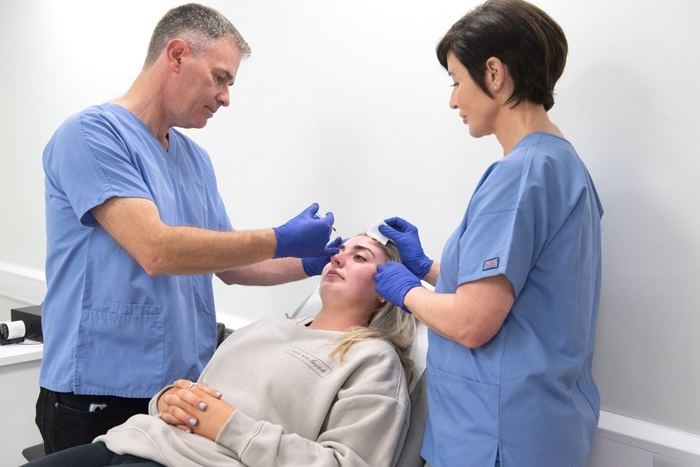Hair loss affects people of all ages and genders, often leading to decreased confidence and social withdrawal. While numerous treatments exist, hair transplantation has emerged as the most popular solution for those struggling with hair loss.
Hair transplantation has advanced significantly from its early invasive methods to the current Follicular Unit Extraction (FUE) techniques, which eliminate the need for surgical scalpels. Recent innovations, including robotic-assisted procedures, now enable large-scale hair transplants in a single session, showcasing major technological strides.
The FUE method involves extracting individual hair follicles and implanting them into balding areas without the need for cuts or stitches. This technique reduces tissue damage, enhancing the success rate of transplants, leaving no visible scars, and allowing patients to resume their daily activities sooner. However, FUE is less effective for individuals with extensive hair loss due to limitations in the number of grafts that can be transplanted.
Motion Clinic has recently demonstrated the capability to perform mass hair transplants of over 4,000 follicles in one session using the FUE method.
A representative from Motion Clinic highlighted their success: “We have conducted over 26,000 FUE procedures, transplanting more than 50 million follicles. This represents a significant milestone for our clinic and underscores the safety and efficacy of our methods.” The clinic employs the i-direct system for these large-scale transplants, allowing for up to 4,000 follicles to be transplanted daily. This approach is also advantageous for patients needing corrective procedures or those who wish to avoid shaving their heads, as it facilitates a quick recovery without visible signs of surgery.
Dr. Song Woon-hyun, director of Motion Clinic, emphasized the importance of selecting the right procedure: “Advancements in hair transplant techniques offer great promise for those experiencing hair loss. However, it’s vital to choose a procedure based on your specific needs, not just on individual benefits. The expertise of the medical team and clinical results should also be considered when selecting a clinic.”

